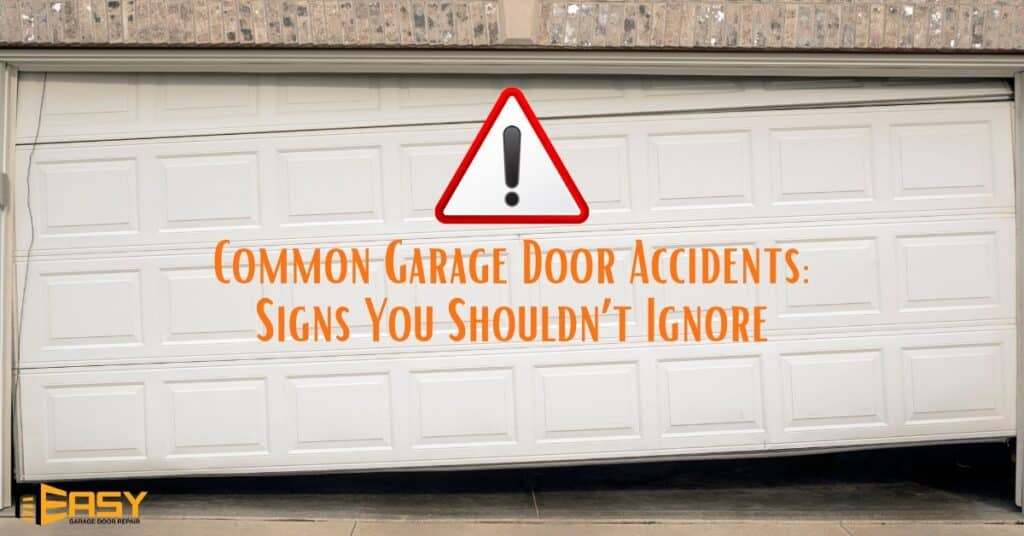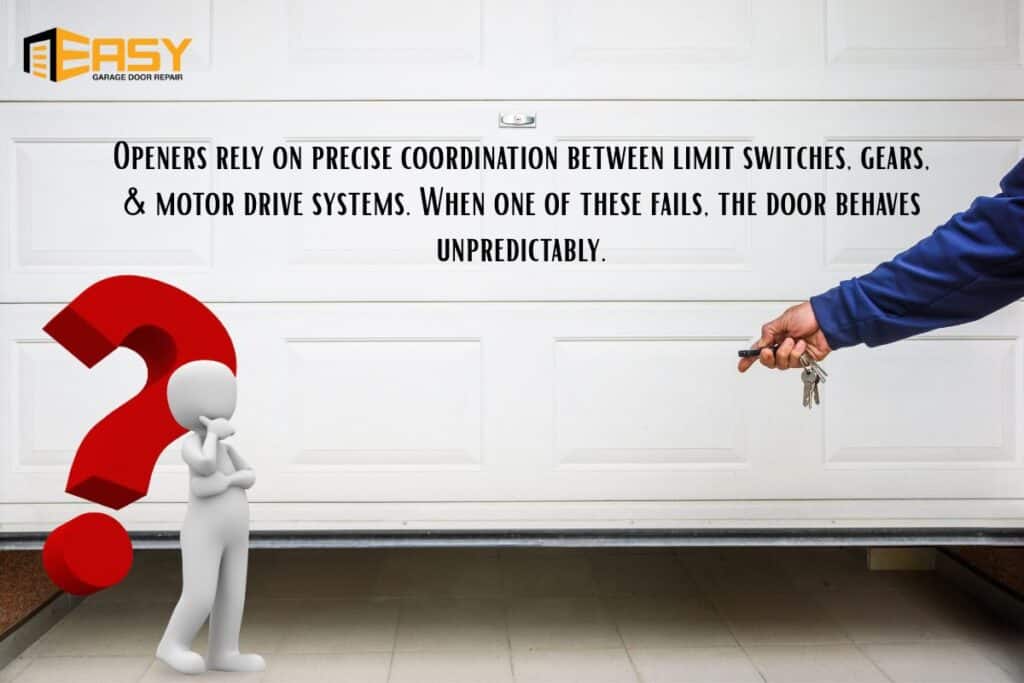
Garage door accidents can occur without any warning signs. A faulty garage door crushed a 42 years old man who was delivering to a factory in Virginia. He had no reason to think the garage door above him would fail, but it did. A 500-pound metal door broke loose and crashed down on his shoulder.
He broke multiple bones of the ribs, back, femur, and heel. He spent months in the hospital and was unable to work for over a year. The case settled for $950,000 just before trial. This happened just because of poor door maintenance.
People overlook the risks because garage doors rarely give off obvious warning signs before damage. It’s important to educate yourself about the real risks of a garage door accident.
Why Garage Doors Are More Dangerous Than You Think
Garage doors cause more than 7,000 pinching and crushing injuries each year, many involving children under 14. The garage door spring system stores up to 150 pounds of force, which is enough to shatter bones if something goes wrong.
Yet homeowners simply press the button to open the door and are completely unaware of what could fail next. A standard residential garage door weighs between 130 and 300 pounds. Heavier custom or wooden doors can exceed 400 pounds. Now imagine that heavy garage door falling.
Warning Signs You Should Never Ignore
- The garage door opens or closes on its own.
- The door slams shut or closes too fast.
- It feels heavy or hard to lift manually.
- The door shakes, jerks, or moves unevenly.
- Loud grinding, squealing, or popping sounds.
- Remote or wall control stops working properly.
- Sensors don’t stop the door when something’s underneath.
- The door doesn’t hang evenly and hangs lower on one end.
- Springs or cables show rust, cracks, or fraying.
- Tracks, rollers, or hinges appear bent or loose.
Top Most Common Garage Door Accidents

1. Spring Breakage Injuries
Many DIY injuries happen during spring replacement attempts. Torsion springs are wound tightly with extreme mechanical tension, storing up to 150 pounds of pressure. Faulty garage door springs can whip across the garage at high speed. That’s enough force to break bones or cause deep lacerations.
Torsion spring failure causes the door to slam shut or send parts flying. While broken extension springs whip around violently or rip from the mount. Some common types of injuries come from standing too close when a spring breaks. Others happen during DIY repairs with improper tools and experience.
2. Opener Malfunctions
Garage doors are machines. Openers include electric motors, limit switches, and sensors that all must work in perfect sync. Even a simple opener glitch can make the door close on a car, pet, or person without warning.
Openers rely on precise coordination between limit switches, gears, and motor drive systems. When one of these fails, like garage door sensor wires, the door behaves unpredictably. Sometimes the opener sends a false signal to open or close the door on its own. Other times, faulty logic boards make the motor run longer than it should. That can cause the door to jam or force it down harder than usual.

Common garage door injuries happen when people try to enter or exit the garage, unaware that the door is about to move. Fingers get pinched in the panels. Hands or arms may get caught near the edge. In the worst cases, people get knocked down or crushed because the motor keeps running after contact.
3. Falling Doors
A falling garage door is a drop hazard. When a door free-falls, it doesn’t glide. It slams down with gravity and full weight. That’s hundreds of pounds in motion.
This usually happens when lift cables snap or when rollers slip out of the track. A bent track rail makes the door unstable. The rollers jump out, and the entire panel leans or drops on one side and slams.
Injuries can be severe if someone is standing under the door. Feet get crushed. Toes are amputated. In the worst cases, the full door lands on a person’s back or head.
4. Faulty Sensors or Reverse Mechanism Failures
Modern garage doors use photo-eye sensors to detect anything in the path. These sensors rely on a clean line of sight and steady electrical input. If either sensor is blocked, dirty, misaligned, or disconnected, the system can fail.
Sensor misalignment by even a quarter inch can break the infrared signal. A faulty logic board or voltage drop causes the reverse system to fail mid-close. That means the door won’t stop or reverse.

This has caused injuries to people who bent down under the door without realizing it was closing. Even a millisecond delay in response time can result in impact. And most people don’t know this system can degrade slowly, so you won’t notice it right away.
4. DIY Repair Accidents
DIY garage repairs look easy on YouTube. But what you don’t see is the tension, voltage, and moving parts. Over-tightened spring cones may crack or slip. Exposed wire terminals pose a shock risk.
Improper cable rethreading can lead to door collapse or uneven lifting. Falls are common, too. Many climb ladders to work on motors or tracks and lose their balance. A squeaky spring or a jerky door is not a minor issue. It takes only one misstep to land in the ER.

How Can Garage Door Accidents Be Prevented?
Preventive steps are always safe that starting with professional garage door services. Schedule annual garage door inspections by a licensed technician. Test the auto-reverse and sensor systems monthly for functional safety response and avoid injuries.
Install childproof controls and educate family members on safe operation procedures. Avoid handling high-tension parts without professional training and tools. Re-lubricate door parts every 6 months if you live in areas with extreme temperatures.
Explore these garage door repair tips to keep your door in good condition. Consult a certified overhead door technician to safely handle whole door maintenance.
Final Words
Garage door accidents are not rare. They’re real and painful, but preventable. People use the wrong tools or ignore lockout procedures that professionals follow. Some get shocked while poking around inside the opener’s control panel.
Others try to tighten or replace rollers. They don’t know that one loose bolt can drop the entire track assembly. The cost of prevention is always lower than the cost of a medical bill or emergency repair.
We’ve seen firsthand how small warning signs lead to serious types of injuries. They’re red flags, and ignoring them puts your safety and family at risk. Let us inspect the garage door safety features before it becomes a danger








